It was pouring down rain when I arrived at the Victoria and Albert Museum on the morning of November 5. One of the museum’s press officers met me in the lobby and escorted me up the stairs, through the darkened jewelry exhibition, and into the Theatre and Performance gallery. I was there to see curator Keith Lodwick, the lucky person overseeing the newly acquired Vivien Leigh archive. Having met Keith a few times prior to this meeting, I was looking forward to an interesting and lively discussion about the selection of material currently on display to commemorate Vivien’s centenary. He didn’t disappoint. Keith’s passion for his job is palpable; a plus for researchers doing work in the Theatre and Performance archive at Blythe House, as well as Vivien Leigh fans who have been and will be lucky enough to hear him talk about the treasures in his care.
Vivien’s papers had been handed down from her daughter, Suzanne Farrington, to her three grandsons. The V&A entered into negotiations for the acquisition in 2002, but the Farrington family suddenly withdrew for undisclosed reasons. Luckily, the negotiations started again in 2012 and the collection was purchased for an undisclosed sum earlier this year. As an international celebrity, Vivien’s cultural appeal remains as prominent in America as it is in Britain. Keith mentioned that Suzanne came in to the museum not long before the display went up and said that she was glad the papers stayed in the UK to be preserved for the nation. There are over 10,000 items in the archive, including press cuttings books compiled by her mother Gertrude Hartley, diaries beginning in 1929, thousands of photographs (including 1000 color stereoscopic slides taken with Vivien’s own camera in the 1950s and 60s), over 7,500 letters, awards, and other ephemera.
Vivien’s annotated script for Ship of Fools. She thought the character of Mary Treadwell “too bitter” in general.
Having been a fan for years, and doing research in various archives pertaining to Vivien, I’ve seen a lot of things. A few months ago, however, I had the privilege view a portion of the archive at Blythe House and was amazed by the amount of material – particularly photographs – that was new to me. There were private snapshots, and variations of well-known studio portraits, many of which haven’t been published. I can only imagine what treasures have yet to be revealed.
Visitors going to the V&A expecting to see a major exhibition about Vivien will likely be disappointed. There are a handful of paper goods in a glass showcase, as well as two costumes worn by Vivien in another part of the gallery. But don’t be quick to discount what is on display. The chosen items offer a well-rounded glimpse into Vivien’s private and professional world, and are bound to leave fans hungry for more (Bonus: Keith says they plan to rotate the items in the display every six months). With such a huge expanse of material to draw from, I wondered how Keith was able to narrow down the selection. “It was very difficult because the archive is so vast and after looking through it over some months, we feel we’ve really just scratched the surface,” he said. “I suppose the selection was looking at A Streetcar Named Desire, which I thought was really interesting and something she was well renowned for. There’s a huge amount of correspondence between her and Elia Kazan regarding the film, which I hadn’t really read about before. It’s new material.”
The primary focus of Theatre and Performance is to explore the art and craft of how performance is created and constructed. Keith referred to a hand-written note from Vivien to Streetcar director Eliza Kazan, which is currently on display. Scrawled in pencil, it highlights her feelings about the wig she has to wear for the part of Blanche DuBois: “It’s fascinating how she approached the character and the characterization, and how she wanted to look and the costume. That was so important to her.” During his sold-out talk at the BFI on November 12, Keith showed us another letter in which Vivien told Kazan that she wouldn’t mind bleaching her hair again, as she had done for the 1949 stage production. As we know from watching the film, Kazan was able to get beyond the physical construction of her character and coax Vivien’s own emotions out of her shell. But her willingness to obscure her natural beauty if she felt it impeded on the character she was playing is well illustrated here.
Notley Abbey visitor’s book showing a cowboy sketch by Hollywood star Gary Cooper
Also on display is a selection of famous theatre photographs, including one from Streetcar taken by Angus McBean; a Streetcar playbill; a telegram from Norma Shearer congratulating Vivien on winning the role of Scarlett O’Hara, and a letter from Winston Churchill. These are all very interesting but the real centerpiece of the display is the visitor’s book from Notley Abbey. It’s an extraordinary record chronicling the celebrities that stopped by the Oliviers’ Buckinghamshire estate for a weekend or a lavish party between 1945 and 1959. “It’s a who’s who of mid-century entertainment,” said Keith. “Not just theatre people that you’d expect like John Gielgud, Edith Evans, Ralph Richardson, the Redgraves. You have Orson Welles, Katharine Hepburn, Judy Garland, Gary Cooper, Merle Oberon, Bette Davis and her husband Gary Merrill, David Niven. Also her family – Leigh Holman, who she was very close to for her entire life, is a regular visitor. So was Laurence Olivier’s family. It’s extraordinary to see all the people in one place, sometimes on the same weekend, and you think, ‘Oh, to be a fly on the wall.’” Which guest was Keith most surprised to see listed? “Some of the Hollywood people like Gary Cooper. I wasn’t aware of him coming over to Britain in the 1950s.”
The V&A also holds the archives of several of Vivien’s theatrical contemporaries, including costume and set designer Oliver Messel, who “crossed over from theatre to opera to ballet to film, interior design, architecture. He had a very prolific career,” Keith explained. Messel first worked with Vivien Leigh in 1937 when Tyrone Guthrie cast her as Titania in A Midsummer Night’s Dream at the Old Vic. “We have a full set of costume designs for Titania and Oberon, and a beautiful painting, and two headdresses that she wore – in fact, one of them is going on display next year for the ‘Shakespeare: Greatest Living Playwright’ exhibition, in our temporary gallery. They’re so beautifully made. He was a real craftsperson. He loved making model boxes, headdresses. He liked to use everyday objects to make them.”
Vivien wearing the Oliver Messel headdress from Caesar and Cleopatra, currently on display in the Theatre and Performance gallery at the V&A
Of particular interest to Vivien fans will be one of the Messel-designed headdresses she wore in Caesar and Cleopatra (1945). The costume piece has been conserved especially for Vivien’s centenary and is now on display for the first time since 1982. Seeing it up close, one can’t help but marvel at Messel’s craftsmanship and creativity. Wartime constraints meant that the designer had to create cinematic illusion out of everyday materials. The headdress is “made from pieces of papier-mâché, bits of acetate, bits of small glass. The pods are made of individual pieces of cut leather molded with a kind of wax inside. It’s quite an extraordinary object. It looks more theatrical than filmic, but when you watch the film everything reads cinematically. It’s very fairytale-like, which is a world he was very expert at creating.”
Vivien became rather close friends with several set and costume designers throughout her career. The Vivien Leigh archive contains letters from Beatrice “Bumble” Dawson, who designed the general costumes for The Roman Spring of Mrs. Stone, as well as Messel, and Roger Furse, who was close with both her and Olivier. Furse would sometimes sketch pictures on the backs of the letters he sent to the Oliviers.
We talked about how many people continue to be fascinated by the legendary partnership between Vivien and her second husband. “We want to explore Vivien’s work in her own right in terms of her career – she often exists in Olivier’s shadow,” Keith disclosed. “But they are so entwined. How do you separate them?” It’s a tough balancing act, because even when she was still alive, Vivien was largely spoken of as somehow inferior to Olivier. She also referred to herself as such, always praising his achievements and skills and downplaying her own.
Olivier’s influence over Vivien as an actress and a person was profound. Vivien was no doubt more natural on screen than Olivier was, but I’ve always personally felt that comparing them as performers is like comparing apples and oranges. Except if Olivier was an orange, Vivien wanted to be an orange, too. Keith seemed to agree: “Olivier acted from the outside in and, in a way, Vivien acted from the inside out in terms of characterization. I think she absolutely adored him and it must have been very hard for her. It is obvious from her sheer stamina that she wanted to play as many roles as possible. She packed a great deal of creativity into a relatively short life”
When doing research for Vivien Leigh: An Intimate Portrait, I read several of Vivien’s letters to Olivier. Many of them had a very reverential tone, which continued after their divorce. I was hoping Keith could give a hint as to what kind of light the letters in this archive shine on their relationship. He said, “What comes out of this archive is how passionate their relationship was, and the risks they took to be together, considering the era in which they were living. It was quite extraordinary for them to both leave spouses with children to be together. The letters he wrote to her throughout the Gone With the Wind period are quite extraordinary.” They often exchanged gifts and touching tokens of affection “like little carnations and little sewn hearts. He’d send little snapshots of himself in his dressing room and things like that which she used to keep. Endless extraordinary telegrams. I always think they’re the vintage equivalent of the text message, and it’s very fascinating that he was trying to disguise what he was sending her in these telegrams as a way to get around censors and the press. He’d often sign them as Andrew or Kerr and address her as Mrs. Hartley or Mrs. Holman, which she was at the time.”
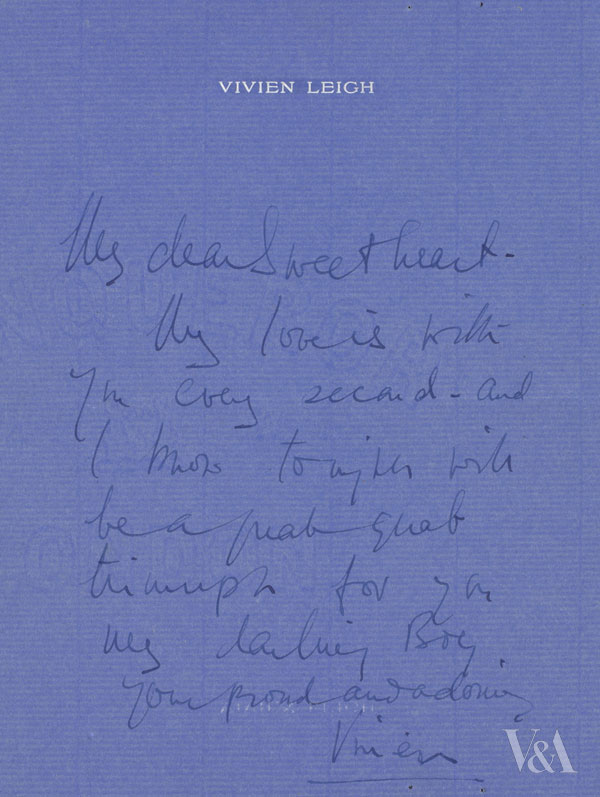 Undated letter from Vivien to Laurence Olivier. It reads: “My dear sweetheart, My love is with you every second, and I know tonight will be a great great triumph for you my darling Boy. Your proud and adoring Vivien.”
Undated letter from Vivien to Laurence Olivier. It reads: “My dear sweetheart, My love is with you every second, and I know tonight will be a great great triumph for you my darling Boy. Your proud and adoring Vivien.”
What can researchers and casual fans expect to take away from this archive once it’s been catalogued and opened to the public? Keith hopes that people “will consider her important place in British theatre and film history – her legacy, how important she was, how she wanted to be strong, accomplished, and versatile as a performer. For film historians and people who perhaps want to begin to write a slightly different story, there are all kinds of things in this archive about how she approached acting.”
As an actress, Vivien “seems so separate from her theatre contemporaries [Peggy Ashcroft, Edith Evans, Rachel Kempson]. She was uniquely part of that tradition of English theatre with the Old Vic, Gielgud, Richardson etc. Those worlds were so interwoven, and yet she stands very separate, almost an international persona. She wanted to be a part of the future of British theatre history. The National Theatre came out of the Old Vic, which she was very much part of. It was Olivier’s dream, of course. It had been discussed for such a long time – well over 100 years, and he was carrying on the flame of that tradition of Henry Irving and Ellen Terry, of having a national theatre for Great Britain. She would have been so much a part of that discussion throughout the 40s and 50s…It’s rather sad that she wasn’t part of that world when it finally formed itself in 1963 as the National Theatre Company at the Old Vic.”
There are so many examples of museums and libraries purchasing or being given the papers of cultural figures only to have them sit in boxes in the basement for decades, shut away from the outside world, even when they aren’t embargoed. So, it was refreshing to hear Keith talk about his plans to make the Vivien Leigh papers accessible to a wider audience as soon as possible. I personally can’t wait!
The V&A will continue celebrating Vivien’s centenary with the free exhibit in the Theatre and Performance gallery. On Wednesday 29 January, Keith will be giving a lunchtime lecture about the archives of Vivien Leigh and in addition, there will be a seminar on Saturday, February 8 titled “Vivien Leigh: Stage and Screen, the Struggle and Success.” Speakers include Keith, Dr. Kate Dorney, myself, and Gone With the Wind scholar Helen Taylor. Tickets can be purchased online via the V&A’s website.
All images in this post used by permission of the V&A.
♠ ♣ ♠ ♣ ♠
♠ ♣ ♠ ♣ ♠


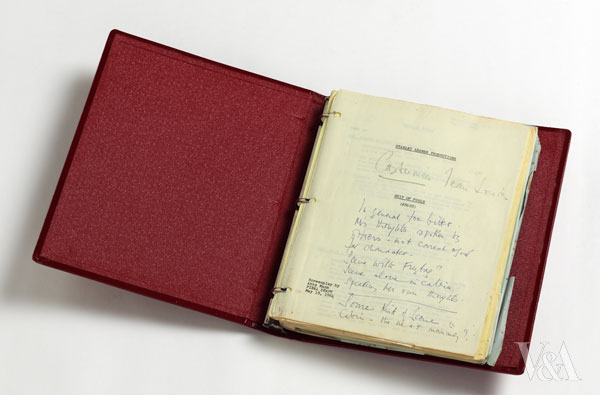
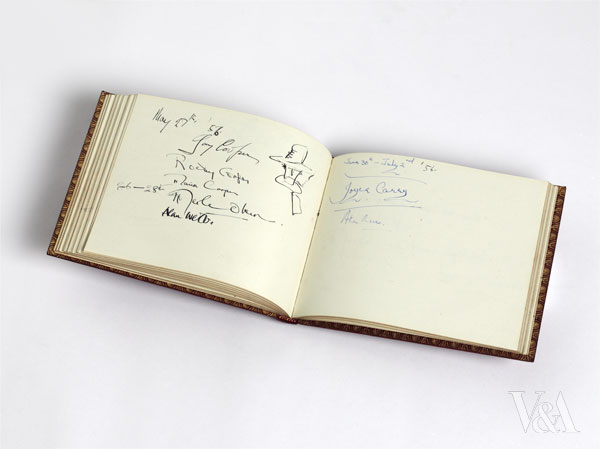
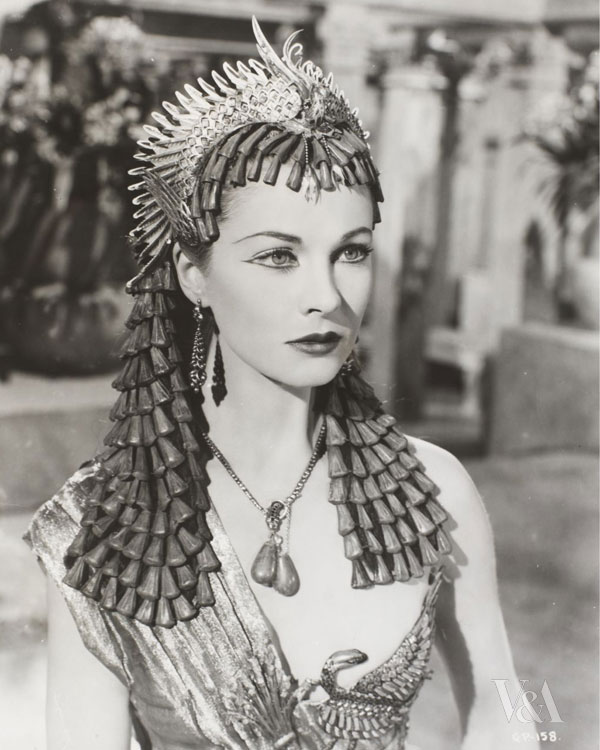

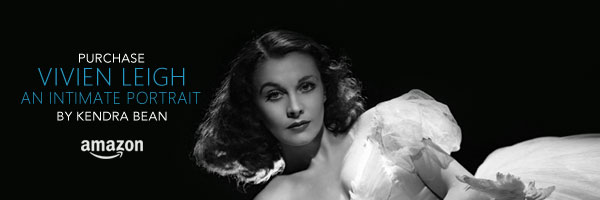

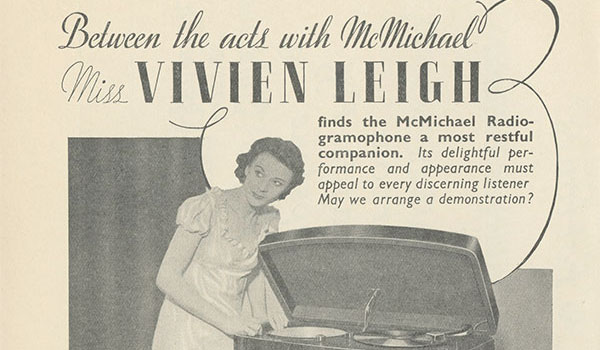
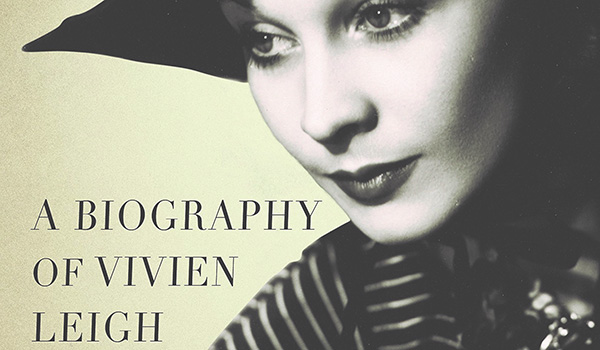

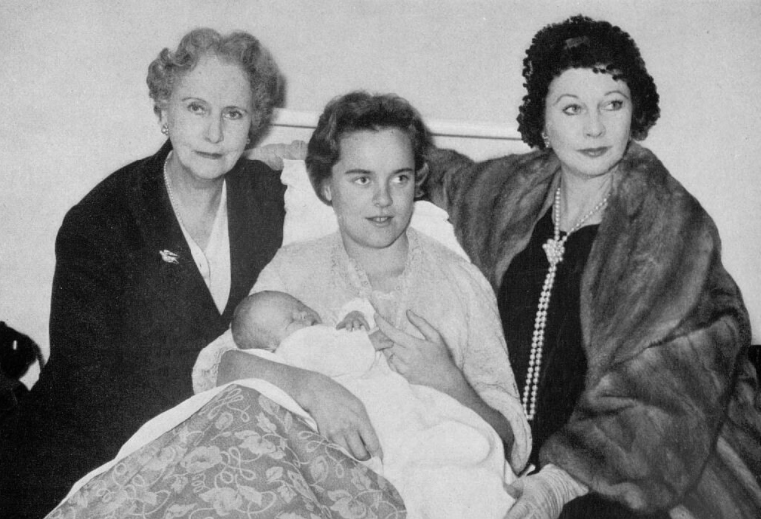
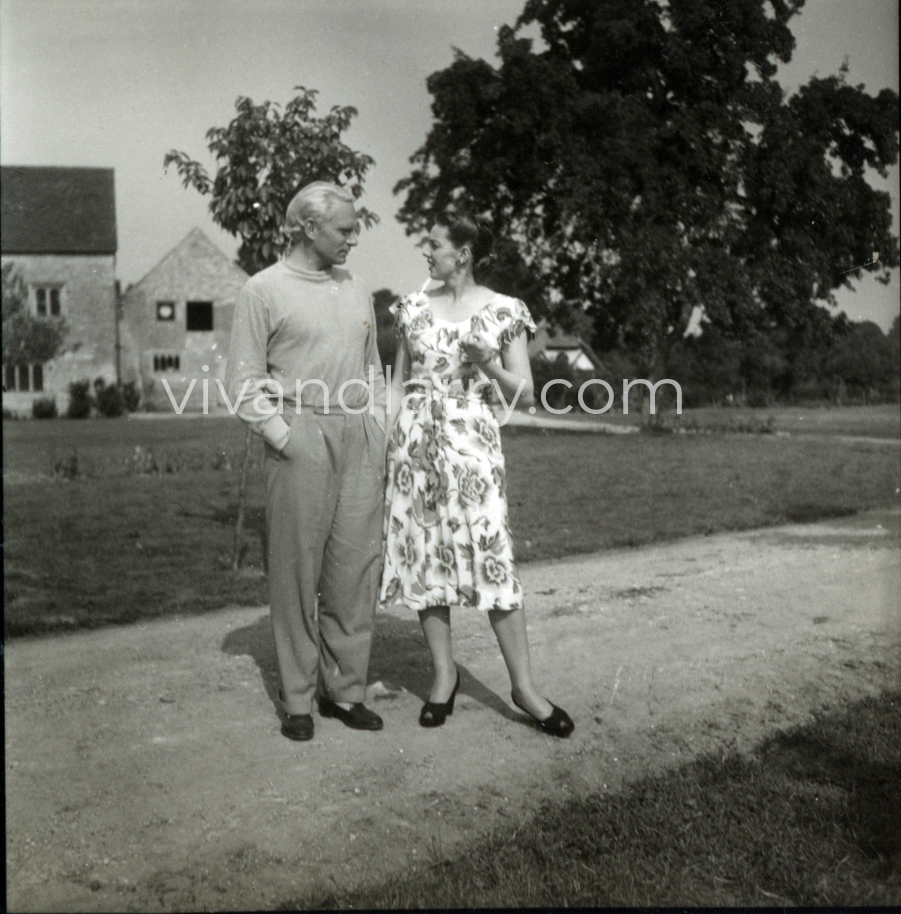
Kendra, every word of this blog-post is riveting. As I’ll never see the archive in person I’m counting on you to dive in and tell me all about it! Thank you (and Keith) for this interview and for sharing this information. Good luck in February at the seminar … I so wish I could be there for it!
David, you’ll have to come over when they’ve catalogued it, if even just to ruffle through and see some of the papers firsthand!
Many thanks for the well wishes for February and I’m glad you enjoyed the interview 🙂
Happy holidays!
Thanks for describing this Exhibition. Would love to go to the Victoria and Albert Museum after reading this
The V&A is arguably the best museum in London (it’s certainly my favourite). There is currently no exhibition about Vivien, only a small display, but they have a lot of potential to do something bigger in the future
Also – good luck for the seminary in February. Sounds very interesting.
Thanks so much for this glimpse into the archive, Kendra. Vivien was unique in all ways, but especially so among female British stars. Compare her to Valerie Hobson, Margaret Lockwood, Wendy Hiller, Nova Pilbeam, even Jessica Tandy (Jessica was the French princess in Larry’s first go at Henry V, remember!). Scarlett made her a huge star, but she didn’t “go Hollywood” like Greer Garson or, later, Deborah Kerr.
Only Ingrid Bergman is a true European rival for international status as stage and film actor, with Lilli Palmer perhaps a lower-priced third. And among golden age American stars, Katharine Hepburn stands out as a kindred spirit for her stage dedication, including appearing in London and leading an Old Vic tour. No wonder she and Vivien were fast friends.
It is sad to consider that Vivien last acted in London in Look after Lulu. Remember Tynan’s snide comment about encountering Vivien and Coward at the Royal Court, and fearing that the West End was invading? It’s a shame she wasn’t a part of the National Theatre. Might she have been a sexy Gertrude to Peter O’Toole’s Hamlet, instead of Diana Wynyard? Hmmm. I remember a quote from an old book on the Academy Awards attributed to Vivien: “I think I’ll stay abroad for a while. After all, there isn’t much reason for me to go home.” Very sad.
Wonderful, however, that her home city is celebrating her as she deserves, now, all these years later.
Yes, the Tynan comment was rude, indeed. Poor Vivien to have to put up with his unpleasant arrogance. She probably would have made a wonderful Gertrude, although I imagine it wouldn’t have been very comfortable for Larry being the director of the NT. Alas. I think she was able to strike out on her own with Tovarich and Duel of Angels, and the 1961 Old Vic tour. I hope it gave her confidence to know she could do all of these things without Larry’s help (although she continued to solicit his advice).
The centenary celebrations here have been wonderful! So much love in the air for Vivien, and what’s more, no mudslinging at her legacy. It’s all been very positive!
Thank you for setting up this most informative and fascinating insight into Vivien Leigh.
I look forward with much anticipation to attending the seminar on the 8th of February. Will you be doing book signings on the day and if not do you have any planned as I would like to purchase a copy after reading this excellent blog.
I attended the recent archive day at Blythe House and was one of several visitors who were a little disappointed not to be able to view more of the collection. I was told it may take up to two years before everything is catalogued and ready for a major exhibition at the V and A! Shame it wasn’t done in time to tie in with the other centenary celebrations of Vivien Leigh.
It was good to see The BFI showing a selection of Vivien Leigh films this month but just wished they had shown most of the films over a longer period as the majority were only shown within the first week! Then it was Gone With The Wind only I’m afraid.
Is the lunch time lecture with Keith Lodwick on 29/01/14 being held at The Sackler Centre within the V and A and would I need to book and pay to attend? I haven’t seen this talk advertised anywhere so would be grateful for any info regarding this. Many thanks and congratulations on the launch of your book Vivien Leigh: An Intimate Portrait which looks to be the definitive guide for any fan.
Hi Anthony,
Thanks for the message. I’m not sure about a book signing on the 8th. I’ll check with my publicist to see if she’s arranged anything with the V&A gift shop. As the museum only acquired the VL papers earlier this year, it’s unlikely they would have had anything ready for a big exhibition during Vivien’s centenary. As you mentioned, it takes quite a while to get everything sorted and recorded.
The BFI season lasted the whole of November with GWTW only opening on the 22nd. They screened most of the films in chronological order. It was a treat to get to see so many!
Not sure about the location of the talk on the 29th but will enquire and let you know.
Hi Kendra,
I hope that Suzanne Farrington and her sons are aware of all of your dedication to the arduous task of demystifying and enlightening the memory of Vivien Leigh for a new generation of fans and admirers. Once the entire collection is catalogued, do you think that you will write another biography on her in more the style of Vickers or Walker, or does someone else have a plan to undertake this task?
Hi Peter,
Suzanne is definitely aware of what I’m doing – at least, she knows about my book because she allowed me to quote from some of Vivien’s letters and my publisher sent her a copy of the finished product last year. Not sure about her sons.
I might write a full biography of Vivien some day. I’m actually working on a different sort of project about her tat the moment, which I’m really excited about!
I know that a diary is a very private thing, but will Vivien’s ever be released? I have always been interested in seeing what she has written in it. Apparently someone has seen it because we know that she wrote “Had a baby – a girl,” in it when she had Suzanne. If many letters are in public, why not the diary?
Vivien’s “diaries” are now in the care of the Victoria & Albert Museum in London, along with the rest of the papers her family sold in 2013. However, they are not journals – they’re more like datebooks.
Thank you so much for this! I have always adored Vivling. I think this photograph of her from Cesar and Cleopatra truly shows how breathtakingly beautiful she was. She was an amazing actress both on stage and screen. We will never see her likeness again. She was truly unique and a star par excellence. She and Marlon Brando electrified A Street Car named desire! I simply adored her.